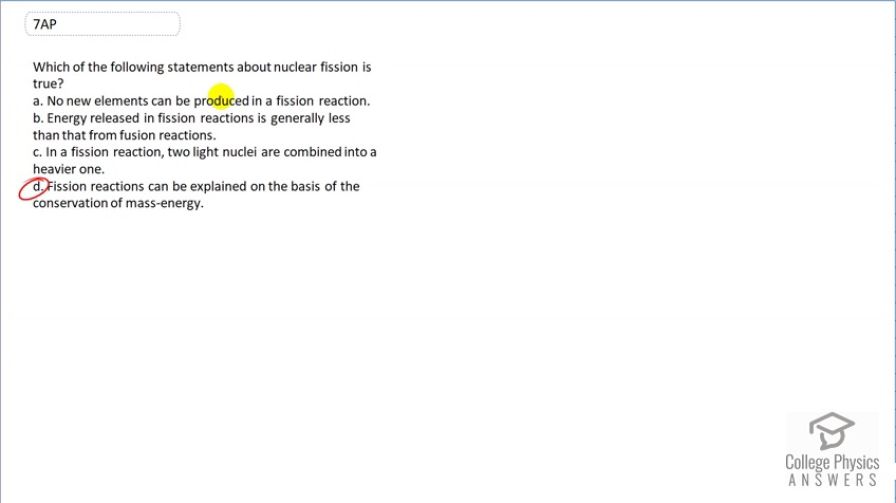Question
Which of the following statements about nuclear fission is true?
- No new elements can be produced in a fission reaction.
- Energy released in fission reactions is generally less than that from fusion reactions.
- In a fission reaction, two light nuclei are combined into a heavier one.
- Fission reactions can be explained on the basis of the conservation of mass-energy.
Final Answer
(d)
Solution video
OpenStax College Physics for AP® Courses, Chapter 32, Problem 7 (Test Prep for AP® Courses)

vote with a rating of
votes with an average rating of
.
Video Transcript
This is College Physics Answers with Shaun Dychko. For fission we can say that (a) is not true because it produces nuclear waste so it definitely produces things; it splits the uranium up into two different radioactive elements and you get different ones depending on the instance it's kind of random which ones are produced there's a bunch of possibilities. Part (b) energy released in fission is less than that of fusion well, the opposite is true fission reaction produces more energy per fission than a fusion reaction does however fusion does produce a lot of energy because there are so many little tiny tritium's or deuterium's involved so and on a per mass basis, fusion would produce more energy per mass of material that you start with but on a per reaction basis, fission produces more energy in a single splitting of a single uranium atom versus the fusing of a pair of deuterium atoms. OK Part (c) in a fission reaction, a heavy nucleus is split into two lighter ones so the opposite is true so (c) is not right. Now (d) is the only possibility left so we know that's going to be the answer; fission reactions can be explained on the basis of the conservation of mass-energy. So we get energy from a fission reaction because the total mass of the products produced is less than the total mass of what you started with and that mass difference or mass defect it's called is what appears in the form of energy. So (d) is the answer.